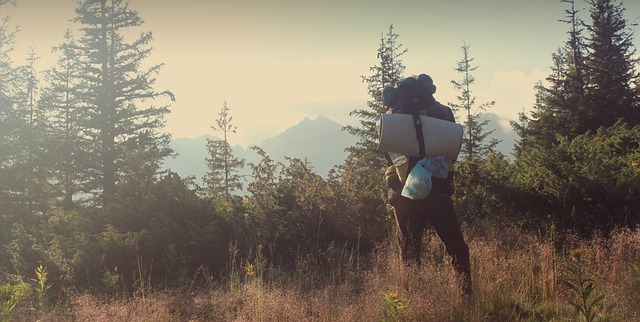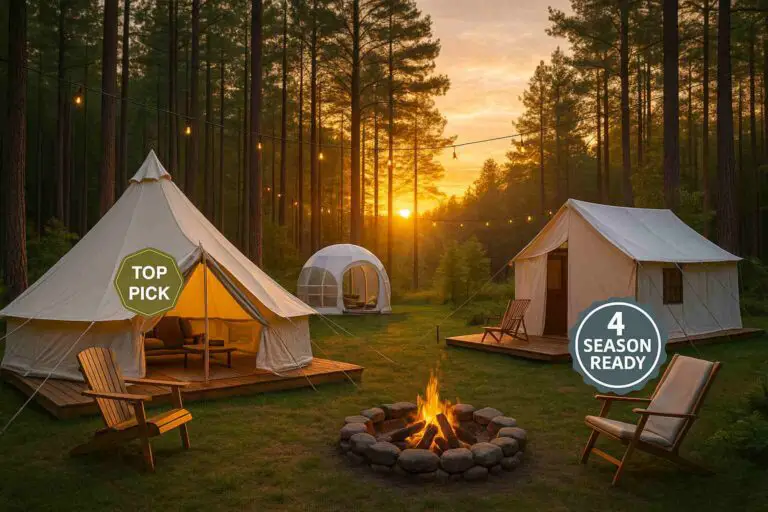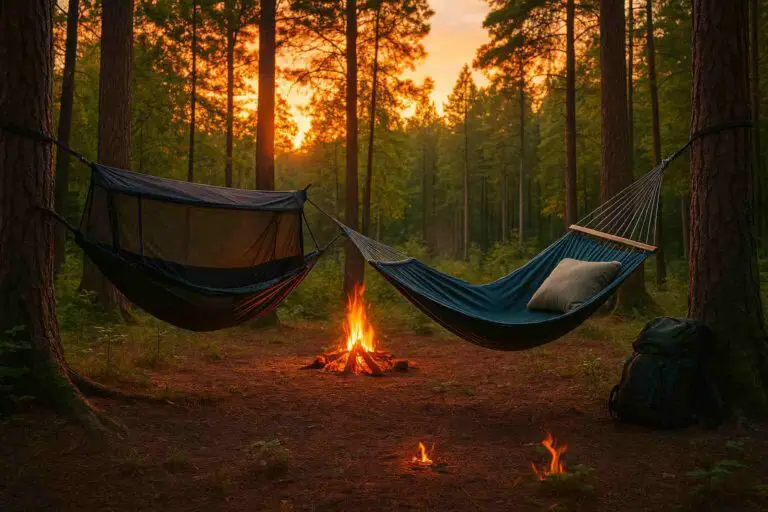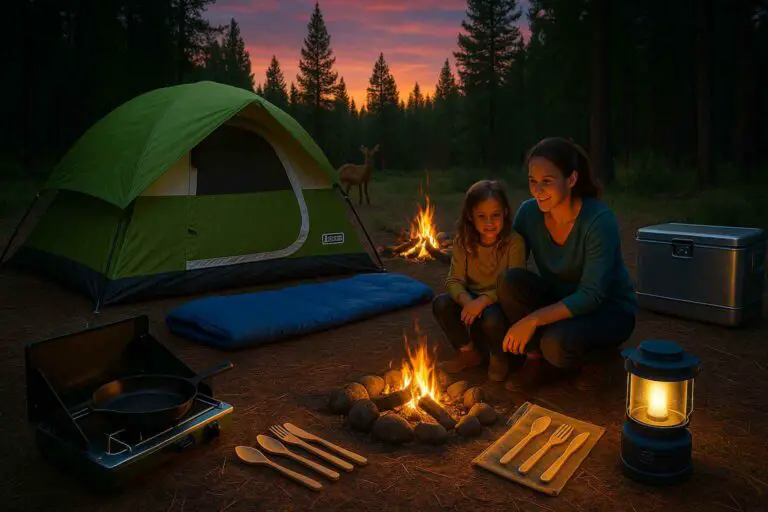A good night’s sleep is crucial for any outdoor activity, whether it’s camping, hiking, or backpacking. A key element to a comfortable and restful night’s sleep is a quality sleeping bag. However, with so many options available, it can be overwhelming to choose the perfect one. That’s why I’ve created this ultimate guide to help you in choosing the perfect sleeping bag for your needs.
In this ultimate guide, I’ll cover everything from understanding sleeping bag ratings and types to insulation materials, size and shape, additional features, and maintenance and storage. By the end of this guide, you’ll be equipped with all the knowledge you need to choose the perfect sleeping bag for your next outdoor adventure.
Understanding Sleeping Bag Ratings
When choosing a sleeping bag, one of the most important factors to consider is its temperature rating. Sleeping bag ratings indicate the lowest temperature at which a particular bag can keep you warm and comfortable. Understanding sleeping bag ratings is crucial in choosing the right bag for the conditions you’ll be camping in. Here are some key things to keep in mind:
Temperature Ratings
- Most sleeping bags have temperature ratings that fall between 0°F and 50°F.
- It’s important to note that these ratings are just a guide and can be subjective, as everyone’s body reacts differently to temperature.
- As a general rule, if you’ll be camping in colder temperatures, choose a sleeping bag with a lower temperature rating, and if you’ll be camping in warmer temperatures, choose a bag with a higher temperature rating.
Comfort, Limit, and Extreme Ratings
- Sleeping bag ratings typically come in three different categories: comfort, limit, and extreme.
- Comfort rating: This is the temperature at which an average woman can expect to sleep comfortably in the bag.
- Limit rating: This is the temperature at which an average man can expect to sleep comfortably in the bag.
- Extreme rating: This is the lowest temperature at which the bag can be used and still provide some level of protection from hypothermia.
Personal Factors
- Keep in mind that other personal factors, such as your metabolism, clothing, and sleeping pad, can also affect how warm you feel in a sleeping bag.
- Consider choosing a sleeping bag with a lower temperature rating if you tend to get cold easily or if you’ll be camping in very cold conditions.
Understanding sleeping bag ratings is an important step in choosing the perfect sleeping bag for your needs. Keep in mind the temperature range you’ll be camping in and consider your own personal factors when making your decision.
Types of Sleeping Bags
When it comes to choosing a sleeping bag, there are several types to choose from, each with its own advantages and disadvantages. Here’s an overview of the most common types of sleeping bags:
Mummy Sleeping Bags
- Mummy sleeping bags are designed to be very efficient at trapping heat and are typically the warmest type of sleeping bag.
- They are shaped like a mummy, with a tapered design that helps to eliminate dead space and maximize warmth.
- Mummy sleeping bags are ideal for backpackers or anyone who needs to minimize weight and pack size.
Rectangular Sleeping Bags
- Rectangular sleeping bags are roomier than mummy bags, providing more space to move around while sleeping.
- They are a good choice for those who prefer a more traditional bed-like experience, as they are more comfortable for side and stomach sleepers.
- Rectangular sleeping bags are typically heavier and bulkier than mummy bags, so they are better suited for car camping or shorter hikes.
Semi-Rectangular Sleeping Bags
- Semi-rectangular sleeping bags combine some of the features of both mummy and rectangular bags.
- They have a tapered design like a mummy bag, but are not as snug as a traditional mummy bag, providing more room to move around.
- Semi-rectangular sleeping bags are a good compromise between warmth and comfort and are a good choice for those who need a balance between weight and comfort.
Double Sleeping Bags
- Double sleeping bags are designed to accommodate two people and are ideal for couples or families.
- They are typically wider and longer than standard sleeping bags and can be joined together for extra warmth and comfort.
- Double sleeping bags are heavier and bulkier than single sleeping bags, so they are not a good choice for backpacking or long hikes.
Choosing the right type of sleeping bag depends on your personal preferences, the type of outdoor activity you’ll be doing, and the weather conditions you’ll be facing. Consider the pros and cons of each type of sleeping bag before making your decision.
Insulation Materials
When choosing a sleeping bag, another important factor to consider is the insulation material. Insulation is what keeps you warm and comfortable inside your sleeping bag, and different materials have different properties that affect their performance in different conditions. Here are the most common types of insulation materials found in sleeping bags:
Down Insulation
- Down insulation is made from the soft, fluffy feathers found under the exterior feathers of waterfowl, such as geese and ducks.
- Down is very lightweight and compressible, making it a great choice for backpacking or other activities where weight and space are at a premium.
- Down is also very warm and provides excellent insulation in cold weather.
Synthetic Insulation
- Synthetic insulation is made from man-made materials, such as polyester or nylon.
- Synthetic insulation is generally less expensive than down and is a good choice for those who are on a budget.
- Synthetic insulation is also good in wet conditions, as it doesn’t lose its insulating properties when wet.
Cotton Insulation
- Cotton insulation is not commonly used in modern sleeping bags, but it is still found in some older models.
- Cotton is heavy and bulky, making it a poor choice for backpacking or other activities where weight and space are a concern.
- Cotton also loses its insulating properties when wet, so it’s not a good choice for wet or humid conditions.
Choosing the right insulation material for your sleeping bag depends on the conditions you’ll be facing, as well as your personal preferences and budget. If you’ll be facing cold weather conditions, down insulation may be the best choice for you, but if you’re on a budget or will be camping in wet conditions, synthetic insulation may be a better choice.
Size and Shape
The size and shape of your sleeping bag are also important considerations when choosing the perfect sleeping bag for your needs. Here are some factors to keep in mind:
Length and Width
- It’s important to choose a sleeping bag that is the right length and width for your body type.
- If a sleeping bag is too short, you may not be able to fully cover your head or feet, which can lead to heat loss.
- If a sleeping bag is too narrow, you may not have enough room to move around, which can be uncomfortable.
Shape
- The shape of your sleeping bag will also affect your comfort and warmth.
- Mummy sleeping bags are the most efficient at trapping heat, but they are also the most restrictive in terms of movement.
- Rectangular sleeping bags provide the most room to move around, but they are not as efficient at trapping heat.
- Semi-rectangular sleeping bags are a good compromise between warmth and comfort.
Sleeping Position
- Consider your typical sleeping position when choosing a sleeping bag.
- If you tend to sleep on your side, you may want a sleeping bag with more room in the hips and shoulders.
- If you tend to sleep on your back, a more snug-fitting mummy bag may be a better choice.
Choosing the right size and shape for your sleeping bag is important for your comfort and warmth. Consider your body type and sleeping position when making your decision.
Features to Consider
In addition to temperature rating, insulation material, size, and shape, there are several features to consider when choosing a sleeping bag. Here are some of the most common features to look for:
Hood
- A hood helps to trap heat around your head and prevent heat loss from your body.
- Hoods are especially important in colder temperatures or if you tend to get cold easily.
Draft Collar
- A draft collar is a tube-like structure that wraps around your neck to prevent cold air from entering the bag.
- Draft collars are especially useful in colder temperatures or if you tend to move around a lot in your sleep.
Zipper
- A good quality zipper is important for ease of use and durability.
- Some sleeping bags have two-way zippers, which allow you to vent the bag from the bottom if you get too warm.
- A pocket on your sleeping bag can be a convenient place to store small items, such as your phone or a headlamp.
Pad Sleeve
- Some sleeping bags come with a sleeve to hold your sleeping pad in place, which can prevent you from sliding off the pad during the night.
Ventilation
- Some sleeping bags have vents that allow you to adjust the temperature inside the bag to your liking.
Water Resistance
- Some sleeping bags have a water-resistant coating, which can be useful if you’ll be camping in wet conditions.
Choosing the right features for your sleeping bag depends on your personal preferences and the conditions you’ll be camping in. Consider the features that are most important to you when making your decision.
Maintenance and Storage
Proper maintenance and storage are important for ensuring the longevity of your sleeping bag. Here are some tips for taking care of your sleeping bag:
Cleaning
- Follow the manufacturer’s instructions for cleaning your sleeping bag.
- Do not dry clean your sleeping bag, as the chemicals can damage the insulation.
- Use a front-loading washing machine on a gentle cycle with mild detergent.
- Rinse your sleeping bag thoroughly to ensure that all soap residue is removed.
- Hang your sleeping bag to air dry or use a large commercial dryer on a low heat setting.
Storage
- Store your sleeping bag in a large, breathable storage bag, not in its stuff sack.
- Do not store your sleeping bag in a compressed state, as this can damage the insulation.
- Hang your sleeping bag or lay it flat in a dry, cool place to prevent mildew and mold growth.
Common Mistakes to Avoid
- Avoid leaving your sleeping bag compressed for extended periods of time, as this can damage the insulation.
- Do not leave your sleeping bag in direct sunlight, as this can cause the colors to fade and weaken the fabric.
- Do not store your sleeping bag in a damp or humid place, as this can lead to mildew and mold growth.
By properly maintaining and storing your sleeping bag, you can ensure that it will last for many camping trips to come.
Conclusion
Choosing the perfect sleeping bag is an important part of any outdoor adventure, whether you’re backpacking in the mountains or car camping with friends. By considering the temperature rating, insulation material, size and shape, features, and maintenance and storage requirements, you can find the right sleeping bag to meet your needs. Remember to choose a sleeping bag that is comfortable, warm, and well-suited for the activities and conditions you’ll be facing. With the right sleeping bag, you can rest easy and enjoy your time in the great outdoors.








